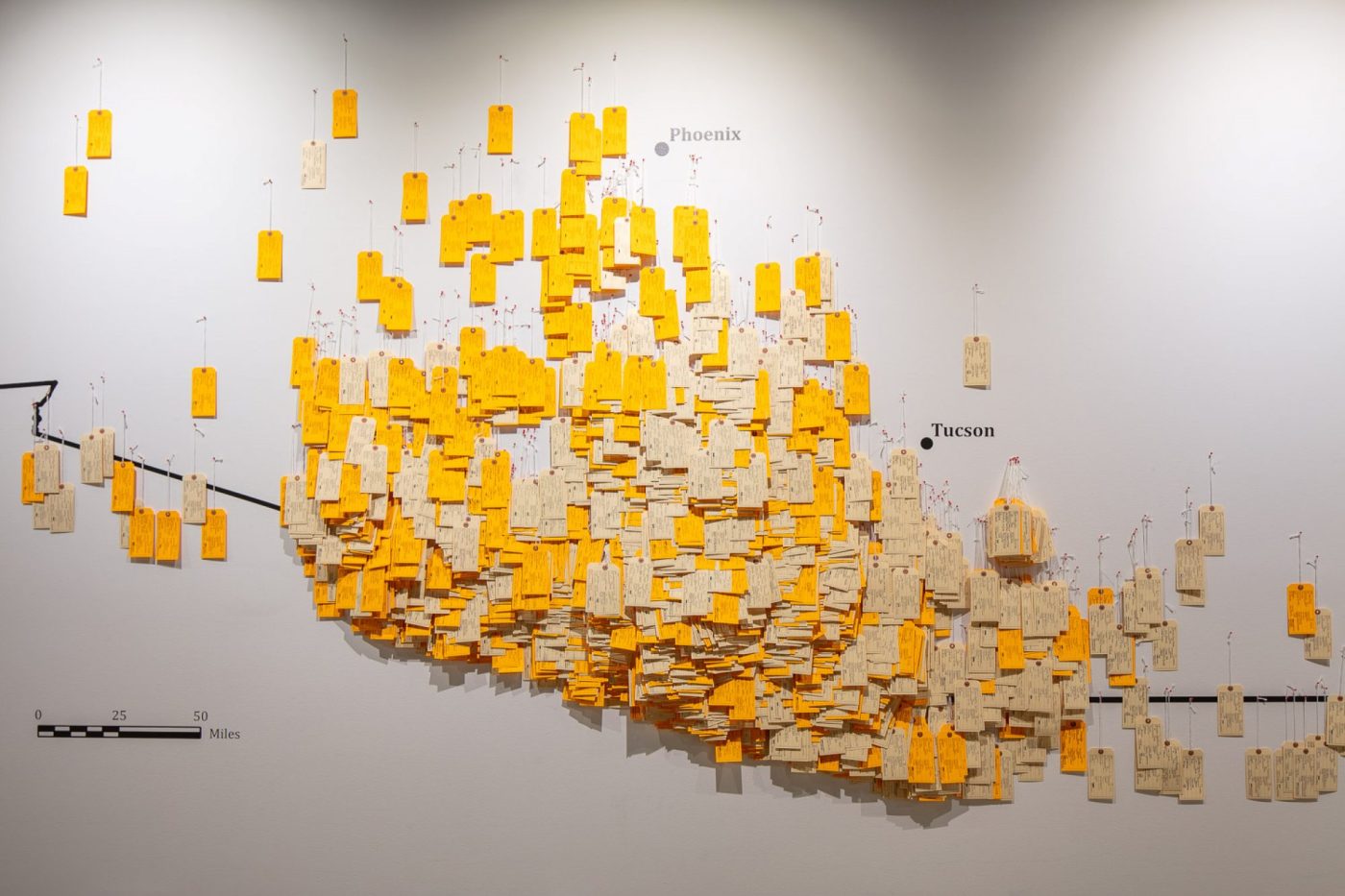
The expanse of desert lands spanning the doorstep of Mexico to Arizona is filled with stories of migrants who’ve trudged through the terrain and struggled through long nights and hot days to cross the border. Many of them—at least 3,200 since 2000—never finished this journey.
“Hostile Terrain 94,” a pop-up exhibit coming to the Penn Museum, reminds us of those people.
“There are complex issues surrounding the border crisis and it serves as a divisive topic,” says Kate Quinn, director of exhibitions and public programs at the Museum. “Through ‘Hostile Terrain,’ we hope visitors will feel empathy for people who leave their homelands and make the trek to the U.S. in search of a better life.”
The project, created by the Undocumented Migration Project—a longterm anthropological study—to highlight the consequences of U.S. and Mexico immigration policy, is a 20-foot-long map of the border along Arizona and Mexico that features at least 3,200 toe tags. (The actual number will reflect the death count as of the time of installation.) The tags will include the name of every person who died during their journey, their age, and how they died. The tags will be pinned to the location in which they died.
Volunteers will assemble the piece, filling out tags and applying them to the map. Quinn says the project was a match with the Museum’s mission and is an interesting new way to look at anthropology.
“Our mission at Penn Museum is to transform understanding of the human experience,” she says. “The deaths occurring on the border are an atrocity. The experiences of these people are, in many ways, the epitome of the human experience. If the Museum is able to provide an understanding of this issue to the University community and to Philadelphians writ large too, we will have achieved our mission.”
The project is a collaboration with the Wolf Humanities Center, and is tied in with a visit from UCLA Professor of Anthropology and Chicana/o Studies Jason de León, director of the Undocumented Migration Project. In addition to leading the installation and documentation of the “Hostile Terrain” project, de León will deliver a lecture at Lightbox Film Center on Sept. 25 at 5 p.m. that discusses kinship, race, and violence on the human smuggling trail, as well as present a related film in which he has been involved, “Border South.” This event and the concurrent installation kick off the Center’s “Year of Kinship.”
“‘Hostile Terrain’ was incredibly exciting to us because it offered a new way to engage the diverse audience of Philadelphia,” says Karen Redrobe, director of the Center. “It also makes our audience members very interactive with the question of kinship—they are doing, writing, thinking, in contrast to the usual sitting and listening. That seemed a really exciting prospect to me, and one of the things the Wolf Humanities Center has enjoyed doing in the past is collaborating with museums and other institutions, including those at Penn.”
The result, she explains, will be a unique visualization of what the migration experience can look like, and one that will, she hopes, provide an “almost meditative reflective space to spend time in, thinking about the individuals involved.”
The project will begin installation on Monday, Sept. 23, and continue on Sept. 24. This is considered a prototype of the final series of installations, which will be spread across 150 locations in the U.S. and Mexico in 2020, leading up to the November presidential election.
Redrobe says the project is asking for 600 volunteers for the Museum installation; people interested in writing toe tags can sign up for 30-minute time slots to participate. Registration for volunteering is requested but not required.







